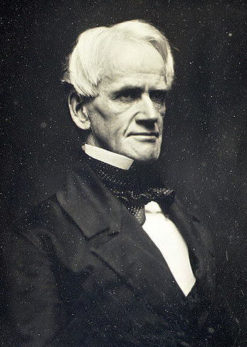One of the highest-ranked schools in America today, Horace Mann in the Bronx, is named after one of the early advocates for “common schooling” — the notion that we should pool our money to fund institutions of education that all children attend. These days, the school carrying his namesake charges an annual tuition of $43,300, which is just over 83 percent of a New York City public school teacher’s starting salary.
I started out teaching in a public school only six miles away from Horace Mann, and for a brief time, the two schools attempted to collaborate. Teachers and administrators aimed to capitalize on the schools’ respective strengths. Horace Mann’s curriculum guided the mostly-white student body to 100 percent passing rates on state tests and high rates of college preparedness. The Bronx Center for Science and Mathematics had brought out the best of its interfaith, interracial, and international student body, and had developed a reputation for creativity in robotics, theater, and more. The school leaders sought synergy. Why reinvent wheels when we could hitch our wagons?
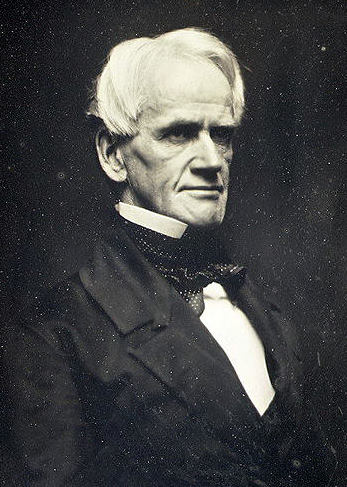
“Don’t reinvent the wheel” — it’s a common American adage. But common sense can be intellectually lazy sometimes. The time-and-money thinking that imbues “don’t reinvent the wheel” with common sense also negates consideration of whether we could actually build a wheel. Most of us can’t even change our own tires.
The first year made clear that, despite our best intentions and efforts, not much could be moved from one school to the other. The cultures in and around our respective schools were too dissimilar, and bridging these cultural gaps would require more than simply sharing curricula and visiting each other’s spaces. In the No Child Left Behind era, the stakes were too high to risk delving deeper. That’s too bad, because learning to work across the lines of diversity that form the fabric of 21st century America is arguably more important than any of the skills evaluated on the state-mandated tests we focused on instead.
Think about the school you attended — was it more like Horace Mann, the school where I taught, or whatever you envision the school across the street from me here in Rawamangun is like? Are your comparisons based on academic rigor, student population, school culture, or something else? What should “common schools” have in common, and just how similar should they be? Who decides?
Since its inception, common schooling has marginalized minority groups. Several internal contradictions lie at the heart of the concept. At the crux of debates about free/taxpayer-funded education, vouchers, charter schools, and universal education lies this question: should schools and students rise to the expectations of the State, or respond to the needs of the diverse cultures and communities they serve?
As you read this Newsletter, consider the democratic implications of who answers this question. To aid your considerations, I will review America’s ruminations on this question and recount Indonesia’s contemplation of it. My argument is that some of the common sense of common schooling is fundamentally anti-democratic, and warrants our collective consideration.
The Standards-Based Education Reform Movement
I realize some (of even my American) readers may not know much about the policy changes that have structured schooling in my country, so let’s begin by popping the hood on the past of American education. This history, in addition to details[1] from my previous Newsletter (JVC-1) and those below, should enable you to open up the common sense of schooling and examine its parts. As America’s 45th president has implied that he intends to tinker with American education, a consideration of what his predecessors built is, at the very least, timely.

In the year I was born (1983), an ominously titled policy document declared America to be A Nation At Risk. ANAR provided numbers that “proved” America’s schools were failing, and that students were falling behind. The report is generally considered to be the genesis of the standards-based education reform movement, and it presaged a drastic shift in who answers our question.
Six years after ANAR’s publication, President George H. W. Bush and all fifty governors established a set of common expectations for the nation’s schools, and stipulated that these should be provably achieved by 2000. But it became apparent that legislating one set of goals for every school in the nation wasn’t working, so in 1994, President Clinton authorized “Goals2000,” which shifted high expectations onto students, and held schools accountable for their performance. This initiative failed to achieve all eight of its goals. Consequentially, President George W. Bush raised the stakes still higher in 2002 by instituting “No Child Left Behind,” which directly tied school funding to student test scores. NCLB marked the first major expansion of the federal government’s role in education since the Elementary and Secondary Education Act of 1965.
For all its failings, the standardization movement did succeed in centralizing control of schools. This centralized approach to education left behind so many students (and teachers, and schools) that in December 2015, President Barack Obama removed all of NCLB’s federal stipulations. NCLB’s failings partially answer our question: at least some degree of local control of schooling is necessary, because running roughshod over the cultural differences between schools is more destructive than constructive. Overstandardization poses real risks for at-risk communities. After thirty years of increased standardization, President Obama’s “Every Student Succeeds Act” turned America back toward decentralization.[2]
Four consecutive presidents,[3] four major policy changes. All proceeding from the premise that children were failing, all proposing a single solution to this problem, none any more capable than the next of achieving its goals. And yet the standards-based educational reform movement has not only managed to hold its ground — it is now going global.
Education Reform Across Borders
There are lessons we can learn about the role education plays in democratic society by studying its (re)form(ation) across borders. Indonesia, a secular democracy with as many school-aged children as America, has a history of education policy reform that roughly parallels America’s, especially when it comes to national testing.[4] As such, the countries serve well as foils in this story of schooling.
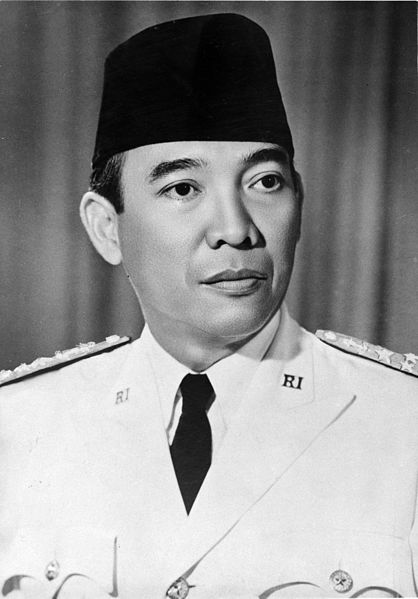
Seventy-one years ago, Indonesians began building their educational system from scratch, as the Dutch made no considerable effort to extend education to the peoples of the archipelago throughout 300 years of colonization. At the time of independence, only about 4 percent of the population could read.[5] Free Indonesians placed great importance on education and literacy, as evidenced by the fact that within twenty years, eighty percent of children were literate.
But these were difficult decades, and many children remained without schools or formal education. Beginning in 1950, those who did attend public schools sat for a Final Examination (“Ujian Penghabisan”) that consisted of an essay. In 1965, at the tail end of founding father Sukarno’s presidency, testing was extended to every subject area. This standardized State Examination (“Ujian Negara”) was administered to every child in the nation, from Sabang to Merauke. This strikes me as incredibly ambitious, and also pretty problematic – but bigger problems loomed on the horizon…
The next years proved to be Indonesia’s most difficult. A politicide resulted in the deaths of over 500,000 people. The killings followed a coup that brought to power President Suharto, and brought about a radically different policy environment. Centralized testing was completely abandoned, and in 1972 it was decreed that all students would sit for School Examinations (“Ujian Sekolah”) that were to be created and graded at the school level. The government was not involved in the crafting or scoring of tests in any way, and provided only general information.
Over the next seven years, President Suharto oversaw the construction of 61,807 primary schools throughout the country. This doubled the country’s educational infrastructure, and constitutes one of the largest school construction programs on record. A parallel teacher recruitment and training program increased the corps of qualified teachers by 43 percent.[6] These positive developments remain understudied, overshadowed by the violence that preceded them (and that arguably necessitated them; the teaching force was decimated by the targeting of intellectuals and teachers).
By 1980, Suharto was steering Indonesia back toward centralization (and not just of education). National testing was reinstituted, but had to remain flexible to accommodate schools that had drifted apart during decentralization. The bipartite nature of the Final Stage Study Examination (“Evaluasi Belajar Tahap Akhir” or EBTA) was intended to straddle the centralization-decentralization divide. EBTANAS (“EBTA Nasional”) tested subjects included in the (fifth) national curriculum, whereas EBTA tested the other subjects taught at any given school. Even EBTA was a move toward centralization, though, as schools had to coordinate their testing with a regional office. The highest six (of nine) of these tests’ scores were then added to students’ report card scores, and the sum was used to determine graduation. That may sound confusing, but having lasted for twenty years, it remains Indonesia’s longest-standing examination format.
Then came the Asian financial crisis, the resignation of President Suharto, and two brief presidencies lasting for two years each. When the dust cleared in 2001, Megawati Sukarnoputri (“the daughter of Sukarno”) had become Indonesia’s first female president. During her three-year term, EBTA was renamed the National Final Examination (“Ujian Akhir Nasional,” or UNAS), and two more steps were taken toward centralization. First, only the final two report cards were considered, which reduced the weight of teacher assessments. Second, the regional half of the test was eliminated altogether. In effect, UNAS was EBTANAS plus two report cards.
In 2004, Susilo Bambang Yudhoyono (SBY) defeated Megawati in Indonesia’s first direct election. During SBY’s ten-year term, education became overtly focused on testing and numbers. Report cards were dropped altogether, testing began for elementary and middle school students, and a confusing system of point minimums was created then reformed four years consecutively. In 2005, students scoring less than 4.25 on one of three tests had to retake the failed test(s). In 2006, a stipulation was added that students must average 4.50 on these three tests or repeat the grade. In 2007, that average increased to 5.00, but students who failed could complete “study group packet C” to graduate. Over the next two years, the minimum average was raised by .25 twice and the number of tests was doubled. To cap it all off, “Ujian Akhir Nasional” (UNAS) was renamed to “Ujian Nasional” (UN) in 2010.
Imagine being a parent tasked with preparing your child (or children, if they weren’t in the same grade) to meet these ever-changing expectations. The pace at which Indonesia traversed the centralization-decentralization spectrum implies indifference on the part of the State to whether students, teachers, and parents understood what was expected of them. This indifference to the local context of education undoubtedly affected marginalized communities disproportionately.
Four presidents, three significantly different testing formats, and to further complicate all this, there are currently two national curricula. That curricular complication aside, Indonesia has arrived at the same answer to the question as America has, having shifted toward centralization at the same time that America’s standards-based reform movement started. And just as America is preparing to change out the people who answer our question, Indonesia has been doing some serious reshuffling of personnel as well. (To read more about recent cabinet reshuffling in Indonesia, read my blog post titled “Change for the Sake of Change?” on ICWA’s web site.[7])
Fool Day School
We’ve pulled up to a present in which both countries’ education models are built around high-stakes testing and are starting to import policies from foreign countries. This hybridization of education policies is rendering schools something less than the sum of their parts. To make a circle of the automotive allusions strewn throughout this Newsletter, I contend that the value of reinventing wheels is getting lost in the race for ever-higher numbers, and that real people’s lives are being adversely affected by policymakers’ attempts to fix things that ain’t broke.
As a case in point, let’s take a look at Indonesian President Joko Widodo’s recent foray into national education, and how his new education minister’s newly announced policy threatens to disrupt the daily routines of 2.6 million teachers and 50 million students.
I say “new minister” because President Jokowi junked the last one after only twenty months on the job. Worrisomely, he is purported to have changed up because his first minister “deviated slightly from the vision and the mission of the President.” When asked by reporters, the replacement clarified that he “has no ministerial mission or vision…there is only the vision and mission of the President.”[8] If President Jokowi intentionally selected this man because he will take no initiative and simply do as told, this would denote a hypercentralization of political power that results in a single person setting education policy for 250 million people.
Since becoming minister, Muhadjir Effendy has only exacerbated these concerns. On the day he was sworn in, he told reporters he never imagined he might become a minister until the day before. In that same interview, he recounted that he originally wanted to be a middle school teacher, but had been rejected; headlines the next day read, “Muhadjir becomes Minister of Education even though he failed to become a teacher.”[9] It is not hard to believe this man really doesn’t have any mission or vision whatsoever. Was this, along with Effendy’s affiliation with Muhammadiyah (one of Indonesia’s two largest Islamic groups), what President Jokowi was seeking?
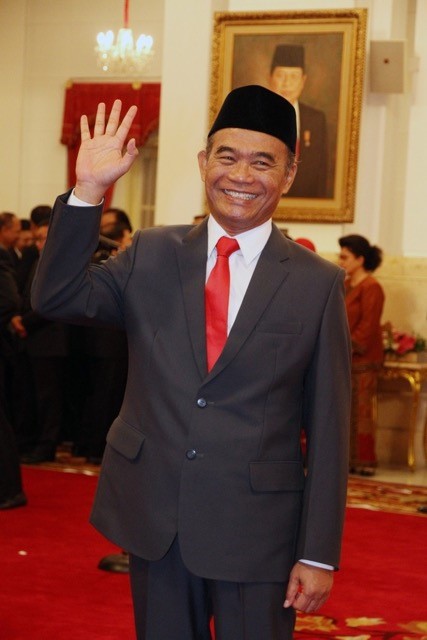
Two weeks later, on August 7th, Indonesia’s new Minister of Education and Culture undertook his first official act, announcing that all elementary and middle schools, public and private, were to institute “Full Day School.” Effendy explained that “with this Full Day system, students will gradually develop their character instead of becoming ‘wild’ outside of school when their parents are not yet home from work.”[10] Proposing to lengthen the school day is no more popular an idea among Indonesians than it is among Americans (though elongated days are a staple of U.S. charter schools). Given that Effendy’s academic specialty is informal/out-of-school education, I have a hard time believing that this was Effendy’s idea. (It occurs to me that the previous Education Minister’s first act – canceling the nation curriculum — deeply complicated his own thirty-four point plan…[11])
Condemnation came strong and swift. Former President Megawati Sukarnoputri declared that her father would have disapproved of Full Day School, because he highly valued “the school of life.” Journalist Dandhy Dwi Laksono dismantled Effendy’s argument, noting that the claim that kids are going wild flew in the face of the fact that children’s and parents’ schedules hadn’t changed much since the minister was born. In his facebook post, titled “Fool Day School,”[12] Laksono noted the urban bias of the proposal, and suggested it would actually desocialize children by limiting their opportunities to interact with members of their community. Within days, over 4,700 people had shared his article.
Then came the change.org petition[13] calling for the rejection of Effendy’s proposal, which stated that “homeschooling children would be more appropriate than sending them to a ‘factory.’” To date, it has received 45,442 signatures. Effendy cited this petition specifically when, two days after announcing the policy, he declared that he was withdrawing it. He commented that if the proposal could not yet be instituted, he would “find another way,” warning that “the People can criticize this idea, but they should not criticize my decision to suggest it.” He pointed out that it was aligned with President Jokowi’s “nawacita” strategy, and defended Full Day School by pointing out that the policy had enabled Finland to get high test scores.[14]
Effendy’s appointment, announcement, and retreat are disconcerting for at least three reasons. First, in stating he will find another way, Effendy makes clear an intention to engage in policy churn.[15] It doesn’t matter that the people have spoken.
Second, instead of listening to citizens and meeting the needs of local communities, Indonesia has resigned itself to policy borrowing. This particular example makes no sense, either — grafting policy that increased test scores in a monoculture with a population amounting to only .1 percent of Indonesia’s is like putting a rollerblade wheel on a monster truck. What’s more, 84 percent of Finland’s population lives in urban areas, but only 54 percent of Indonesians do,[16] so the urban bias Laksono identified would almost certainly detriment the hundreds of distinct cultures that lives outside of Indonesia’s cities.
Third, and of immediate relevance to my American readers, Effendy’s selection demonstrates that presidents can go beyond centralizing educational policy and take complete control of education by appointing a puppet to carry out their will. I’ll note that U.S. President-elect Donald Trump just offered Educational Secretary to Dr. Ben Carson. A surgeon with no experience in the education sector who denies climate change and evolution, Carson believes that “homeschoolers do the best, private schoolers next best, charter schoolers next best, and public schoolers worst.”[17] His website claims that “to be successful, we must take the federal bureaucracy out of education and concentrate on empowering the American people.” The 45th president of my country has said he will abolish the Department of Education, but Carson won’t be the one to do it for him. He declined President-elect Trump’s offer. Michelle Rhee’s name is now being floated instead.
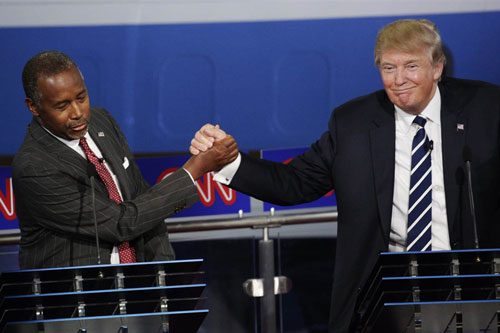
No Two Classrooms are the Same
I think teachers in Indonesia and America are justified in feeling defensive after decades of aggressive incursions into their sector. Teachers in both countries work longer hours, enjoy less autonomy in their classrooms and curriculum planning, and must overcome more hurdles to enter and stay in the profession than ever before. These changes have come fast and furious as politicians roll up their sleeves and set about “fixing” education.
Perhaps it is the competitive spirit of the modern, globalized era that causes politicians (and not just those in Indonesia) to believe that Finland’s educational success can be replicated by copy-and-pasting a policy from one classroom to another. But as any educator could tell you, no two classrooms are the same.
As an itinerant educator, I teach and learn in, and study and write about, schooling on opposite sides of the world. Experience and intuition tell me that there could not, and should not, be a one-size-fits-all-solution to schooling, but over the course of my lifetime, the education policies of many of the world’s most populous countries have been gradually homogenized. I may never understand why we allow policymakers’ plans to trump those of our (children’s) teachers, but I am convinced this anti-democratic trend threatens cultural diversity and marginalized groups. Turning it around will require sustained attention and action from all of us.
_______________________________________________
[1] Indonesia has reformed its national curriculum eleven times in seventy-one years and currently has two national curricula, and thus represents a form of centralized decentralization.
[2] Perhaps you are wondering where the Common Core fits into all this. It is a State Standards Initiative which is not federally authorized or funded, and only applies to mathematics and English language education and assessment. The “Every Student Succeeds Act” expressly prohibits the U.S. Department of Education from attempting to “influence, incentivize, or coerce State adoption of the Common Core State Standards. or any other academic standards common to a significant number of states” (emphasis added). Nevertheless, forty-five states have adopted the Common Core, though three have since repealed it and, curiously, Minnesota uses only the English language standards. The Common Core thus represents a form of decentralized centralization…
[3] President-elect Donald Trump has called the Common Core a “disaster,” and proposed abolishing the Department of Education. Created in 1867, eliminating ED would radically decentralize schools.
[4] https://kazwini13.wordpress.com/2012/04/16/sejarah-ujian-nasional-di-indonesia/; http://news.okezone.com/read/2014/12/30/65/1085698/ujian-nasional-dari-masa-ke-masa
[5] http://factsanddetails.com/indonesia/Education_Health_Energy_Transportation/sub6_6a/entry-4072.html#chapter-1
[6] http://economics.mit.edu/files/726
[7] http://www.icwa.org/change-for-the-sake-of-change-2/
[8] http://nasional.kompas.com/read/2016/08/06/19320281/diganti-anies-baswedan-dinilai-sedikit-melenceng-dari-visi-presiden
[9] https://m.tempo.co/read/news/2016/07/28/058791321/kisah-muhadjir-gagal-jadi-guru-malah-jadi-menteri-pendidikan
[10] http://news.okezone.com/read/2016/08/08/65/1458095/full-day-school-jadi-gebrakan-mendikbud-muhadjir-effendy
[11] https://www.quora.com/How-successful-was-Anies-Baswedans-term-as-Minister-of-Education-What-are-the-key-programs-and-succeses
[12] https://www.facebook.com/dandhy.laksono/posts/10154365001288618
[13] https://www.change.org/p/kami-tolak-pendidikan-full-day-sehari-penuh-di-indonesia-kemendikbud-ri
[14] https://m.tempo.co/read/news/2016/08/09/079794531/menteri-muhadjir-rencana-sekolah-sehari-penuh-dibatalkan
[15] http://www.frederickhess.org/books/spinning-wheels
[16] http://data.worldbank.org/indicator/SP.URB.TOTL.IN.ZS
[17] https://www.washingtonpost.com/news/answer-sheet/wp/2016/03/11/donald-trump-thinks-ben-carson-is-an-education-expert-oy-vey/

